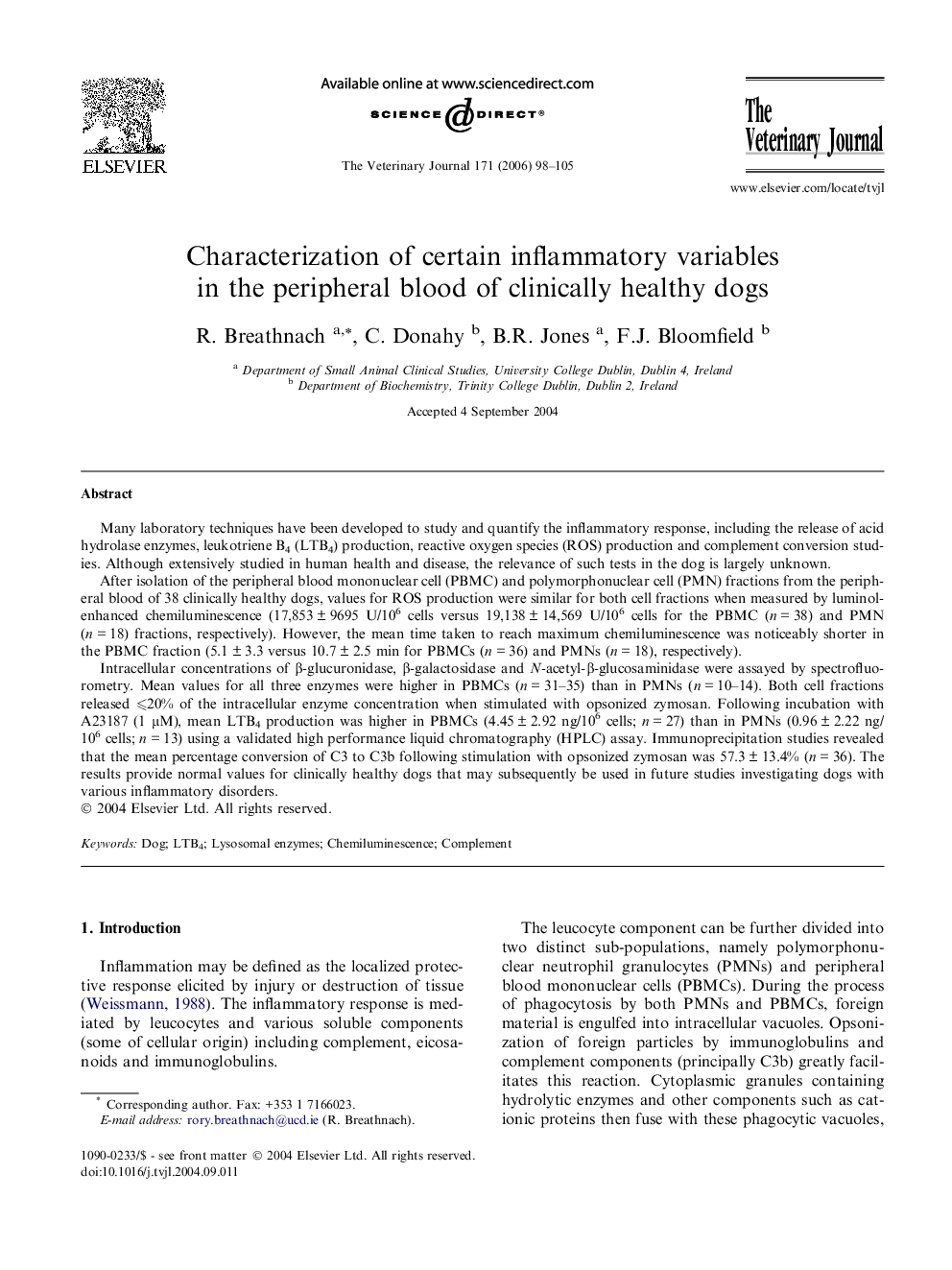| کد مقاله | کد نشریه | سال انتشار | مقاله انگلیسی | نسخه تمام متن |
|---|---|---|---|---|
| 2465976 | 1111846 | 2006 | 8 صفحه PDF | دانلود رایگان |

Many laboratory techniques have been developed to study and quantify the inflammatory response, including the release of acid hydrolase enzymes, leukotriene B4 (LTB4) production, reactive oxygen species (ROS) production and complement conversion studies. Although extensively studied in human health and disease, the relevance of such tests in the dog is largely unknown.After isolation of the peripheral blood mononuclear cell (PBMC) and polymorphonuclear cell (PMN) fractions from the peripheral blood of 38 clinically healthy dogs, values for ROS production were similar for both cell fractions when measured by luminol-enhanced chemiluminescence (17,853 ± 9695 U/106 cells versus 19,138 ± 14,569 U/106 cells for the PBMC (n = 38) and PMN (n = 18) fractions, respectively). However, the mean time taken to reach maximum chemiluminescence was noticeably shorter in the PBMC fraction (5.1 ± 3.3 versus 10.7 ± 2.5 min for PBMCs (n = 36) and PMNs (n = 18), respectively).Intracellular concentrations of β-glucuronidase, β-galactosidase and N-acetyl-β-glucosaminidase were assayed by spectrofluorometry. Mean values for all three enzymes were higher in PBMCs (n = 31–35) than in PMNs (n = 10–14). Both cell fractions released ⩽20% of the intracellular enzyme concentration when stimulated with opsonized zymosan. Following incubation with A23187 (1 μM), mean LTB4 production was higher in PBMCs (4.45 ± 2.92 ng/106 cells; n = 27) than in PMNs (0.96 ± 2.22 ng/106 cells; n = 13) using a validated high performance liquid chromatography (HPLC) assay. Immunoprecipitation studies revealed that the mean percentage conversion of C3 to C3b following stimulation with opsonized zymosan was 57.3 ± 13.4% (n = 36). The results provide normal values for clinically healthy dogs that may subsequently be used in future studies investigating dogs with various inflammatory disorders.
Journal: The Veterinary Journal - Volume 171, Issue 1, January 2006, Pages 98–105